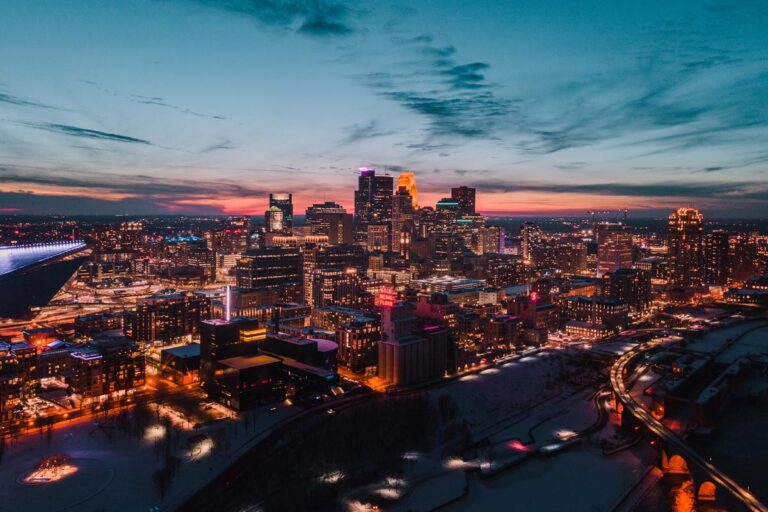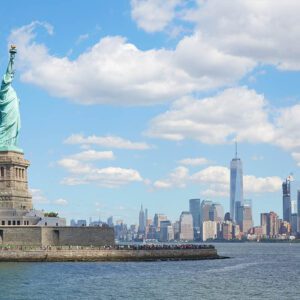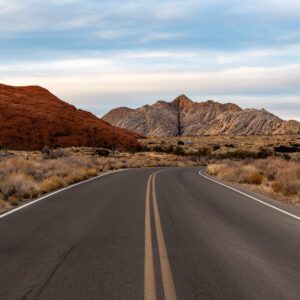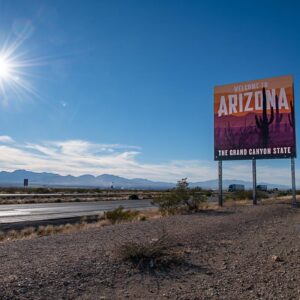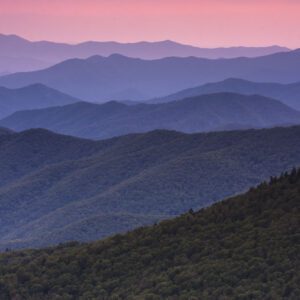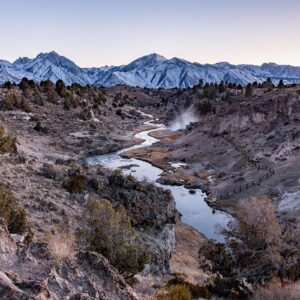Adventure awaits two times over in the Twin Cities of Minneapolis and St. Paul, Minnesota. Separated by just seven miles (and the Mississippi River), the two cities each boast their own unique parks, trails, museums, theaters, and sporting venues, giving visitors plenty of things to see and do. Locals will tell you there’s no bad time to visit Minnesota: the Twin Cities embrace their cold winters with everything from winter sports and outdoor celebrations on frozen lakes to cozy indoor events. No matter the season, Minneapolis is a convenient gateway to Minnesota’s state parks and other natural areas, including the Great Lakes. But you don’t even have to leave the Twin Cities to experience a few of Minnesota’s famous 10,000 lakes: Minneapolis and St. Paul are home to 20 lakes, not to mention the Mississippi, Minnesota, and St. Croix rivers.
In addition to natural beauty, the Twin Cities burst with history, culture, art, and athletics. Visitors to the area can take in world-class live theater, catch a game in any of the four major professional sports, enjoy live music at one of the many indoor or outdoor concert venues, and explore museum exhibits on a wide variety of topics. Fans of craft beer and spirits should be sure to check out the many microbreweries and niche distilleries popping up all over the Twin Cities. Minneapolis and St. Paul offer big-city amenities without the crowds and traffic of larger metro areas. Read on to discover some of the best sites and attractions the Twin Cities have to offer!

Bob Dylan Mural in Minneapolis, MN. Photo by Scott Tribble for Amazing America.
Chain of Lakes Regional Park
The name Minneapolis combines the Dakota word for water (mni) with the Greek word for city (polis). With all the rivers and lakes throughout the city, the name fits the area perfectly. Five of the lakes in Minneapolis have public shorelines which make up Chain of Lakes Regional Park. The park is part of Grand Rounds National Scenic Byway, which also includes stretches of the Mississippi River and other Minneapolis waterways. Brownie Lake, Cedar Lake, Lake of the Isles, Bde Maka Ska, and Lake Harriet are connected by trails, and you can also paddle between some of them in a canoe or kayak. Visitors can bring their own boat or rent kayaks, paddleboards, canoes, and paddle boats from vendors at Bde Maka Ska and Lake Harriet. These two lakes also have public beaches, but they can be weedy and crowded on warm summer days. My advice is to rent a kayak instead, paddle out to the deep parts of Bde Maka Ska or Lake of the Isles and hop right from there into the refreshing water.
Many of the lakes have fishing piers where anglers can try their luck. Cedar Lake is known for musky, northern pike, and bass, while Bde Maka Ska has crappies and panfish. You can grab a bite yourself at Bread and Pickle at Lake Harriet during the summer months. Lake Harriet is also home to a bandshell that hosts free concerts and movies, with a playground nearby where kids can blow off steam before or even during the show. There’s an off-leash dog park near Lake of the Isles and sand volleyball courts near Bde Maka Ska’s Thomas Beach. Some of the trees near Bde Maka Ska are perfect for setting up a hammock with a lakeshore view. In short, you’ll be sure to find an outdoor activity that suits you at Chain of Lakes.
Minnehaha Regional Park

Minnehaha Falls in Minneapolis, Minnesota. Stock photo by Jenna Stensland via Unsplash.
Minnehaha Regional Park forms another link in the Grand Rounds National Scenic Byway. The highlight of this park is Minnehaha Falls, a 53-foot waterfall surrounded by limestone bluffs. The falls freeze over in the winter to form fantastic ice sculptures, and their thaw is a sure sign of spring. Minnehaha was one of the first state parks in the United States; when the state purchased the land in 1889, New York was the only other state that had established a state park. However, the city managed the park from the beginning and the name eventually changed to reflect Minnehaha’s status as a regional park.
In addition to the waterfall, Minnehaha Park contains trails and overlooks along Minnehaha Creek and the Mississippi River. There’s also a wading pool for kids, two playgrounds, a disc golf course, and plenty of picnic tables and shelters. The park is also home to several historic buildings, including the quaint Princess Depot, a tiny train station named for the gingerbread trim on its roof which now operates as a free museum. Trails along Minnehaha Creek lead from the park to Lake Hiawatha and Lake Nokomis to the west.
Minneapolis Sculpture Garden
Located in the heart of the city, the Minneapolis Sculpture Garden is the largest urban sculpture garden in the United States. It houses modern and contemporary artwork from the collection of the Walker Art Center, the adjacent contemporary art museum. The sculpture garden is free and open daily for visitors to explore over 40 sculptures by artists from all over the world. Many of the works were created specifically for the sculpture garden, including the iconic Spoonbridge and Cherry, a whimsical fountain at the garden’s center. Rectangular borders of trees separate the space into outdoor galleries that echo the Walker Art Center’s nearby indoor galleries. The Walker regularly commissions new works from emerging artists to display in the garden, with the most recent additions in 2021.
In 2017, an interdisciplinary team reconstructed the Minneapolis Sculpture Garden to make it more sustainable, environmentally friendly, and unified with the Walker Art Center’s grounds. A major goal of the project was to capture stormwater, keep it out of drains, and instead reuse it to irrigate the garden. The project also converted four acres of low-lying land into a fresh meadow with native vegetation that thrives in damp soil and absorbs excess rainwater. Shortly after the renovation, the brightly-colored pedestrian bridge joining the sculpture garden with nearby Loring Park also received a fresh coat of paint and new decking. The improvements will help the Minneapolis Sculpture Garden handle the heavy traffic it receives as one of Minneapolis’ top attractions.
Minneapolis Institute of Art
Like the Minneapolis Sculpture Garden, the Minneapolis Institute of Art, or Mia, is free of charge. Mia is open every day except Mondays with regular hours from 10 am to 5 pm and stays open until 9 pm on Thursdays. The collection encompasses around 90,000 works of art from all corners of the globe, with the oldest objects dating back to 20,000 BCE. Mia’s primary collections are Arts of Africa & the Americas; Contemporary Art; Decorative Arts, Textiles & Sculpture; Asian Art; Paintings; Photography and New Media; and Prints and Drawings. The Asian art collection is particularly strong, featuring jade carvings, bronze statues, and even a reconstructed wooden gateway from a mansion in China.
The museum’s current Beaux-Arts building opened to the public in 1915. Mia has added several more wings over the years, but only five percent of its enormous collection can be displayed at any given time. Mia hosts many events, from wine tastings to film screenings, and offers free public tours of the collection with rotating monthly topics. The museum also owns the Purcell-Cutts House, a prime example of the Prairie School architectural style made famous by Frank Lloyd Wright. Located near Lake of the Isles, the house is open for tours on the second full weekend of each month.
Guthrie Theater
Disenchanted with Broadway, Sir Tyrone Guthrie envisioned a regional theater that would bring great theatrical productions to audiences outside New York City. He opened the Guthrie Theater in 1963 with a production of Shakespeare’s Hamlet and the theater has continued to stage plays ranging from the classical to the contemporary since then. In 2006, the Guthrie moved from its former location into the current eye-catching building on the Mississippi River in downtown Minneapolis. The architecture alone is worth a visit, even if you don’t stay for a show: the building is open to the public from 9 am to 9 pm Tuesday through Sunday. Venture onto the “Endless Bridge” to nowhere, a cantilevered observation deck extending 178 feet from the side of the building over West River Parkway below. Or step into the Amber Room for 360-degree views out over the Mississippi, suffused with a warm glow by the amber glass.
The Guthrie contains three theater spaces: the Wurtele Thrust Stage, where the 1,100 seats surround the stage on three sides and put the audience at the center of the action; the McGuire Proscenium Stage, where all 700 seats have a front-facing view; and the Dowling Studio black box theater with flexible seating for small, intimate productions. The variety of spaces allows the Guthrie to stage productions large and small, from Shakespearean epics to new works and experimental pieces. Those lucky enough to visit Minneapolis around the winter holidays should consider getting tickets to the Guthrie’s production of A Christmas Carol, a Minneapolis Christmas tradition for 48 years.
First Avenue & 7th St Entry
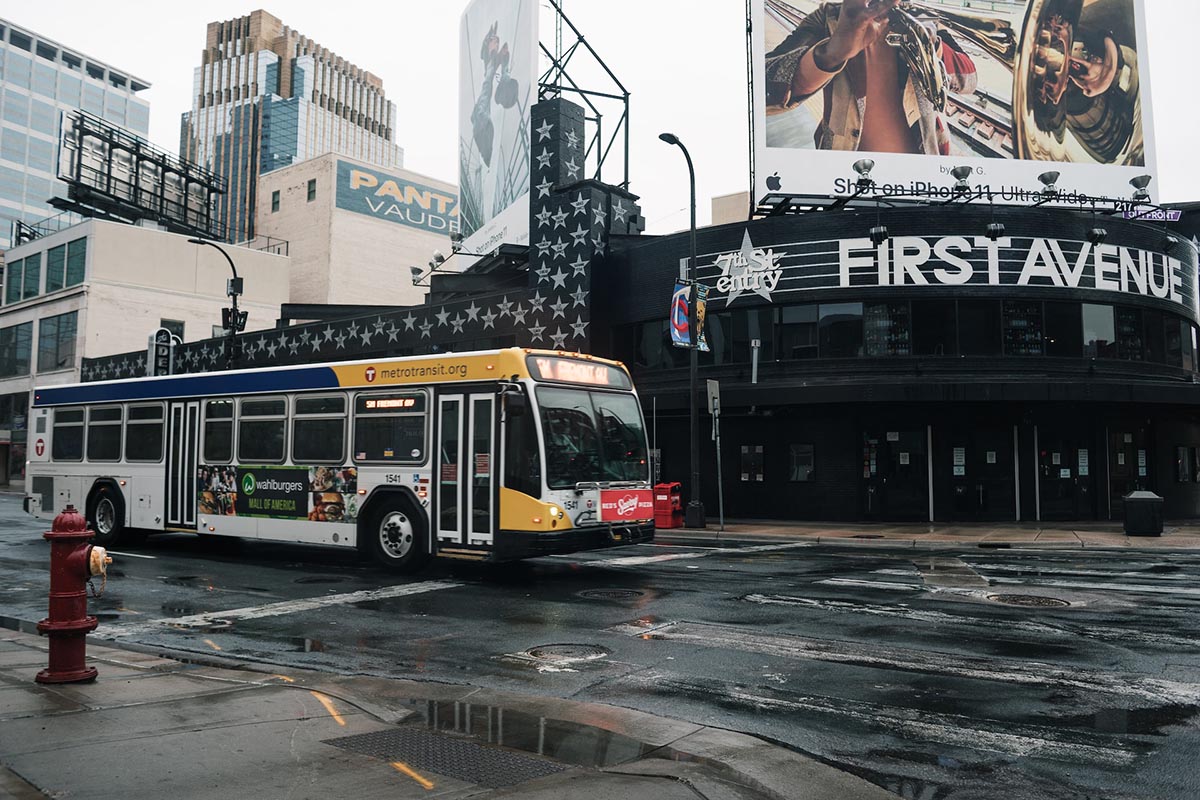
The legendary First Avenue night club in Minneapolis, MN. Stock photo by Weston M via Unsplash.
First Avenue is the longest-running independent venue for live music in the Twin Cities, having just celebrated its 50th anniversary in 2020. The club contains two stages and is located in downtown Minneapolis at the corner of First Avenue North and 7th Street North, which gives the venues their names. First Avenue, also known as The Mainroom, has space to host national acts, while the smaller 7th St Entry has a capacity of 250 and a more intimate feel. The historic building originally opened in 1937 as a Greyhound bus depot and was transformed into a music club in 1970, where Joe Cocker played the first set. During the 1980s, Prince ensured First Avenue stayed on the map with regular performances there; he even set and filmed his movie Purple Rain at the club. Since its inception, First Avenue has welcomed a wide variety of musicians and entertainers, from heavy metal to singer-songwriters.
In 2010, First Avenue received a fresh coat of paint: a black background spangled with large silver stars. Each star contains the name of an artist who has played at the iconic venue, and blank stars remain for future performers. That same year, the venue added The Depot Tavern, a great spot for bar bites, draft beer, and cocktails before or after the show. Today, First Avenue owns a second venue in St. Paul, the Turf Club, and books shows in other locations all over the Twin Cities. With shows practically every night, First Avenue’s venues provide music lovers with ample opportunities to enjoy live performances by old favorites and new voices alike.
Chanhassen: Paisley Park and Chanhassen Dinner Theatres

Fan artwork hung on the gates at Paisley Park shortly after Prince’s death in 2016. Photo by Peter Stringer for Amazing America.
To learn even more about Minnesota’s music scene, head over to Chanhassen, a quiet suburb 20 miles from Minneapolis. There, you’ll find Paisley Park, Prince’s sprawling 65,000-square-foot creative complex where the late artist recorded much of his music and which still serves as a creative refuge today. Prince was born and raised in Minneapolis and unlike other musicians, he continued to live, record, and perform locally even after he made it big. Reserve a spot in advance to join a timed tour through the main floor where you’ll see recording studios, the huge soundstage and concert hall, exhibits on Prince’s movies and albums, concert wardrobe displays, instruments, awards, and other memorabilia.
After your tour of Paisley Park, consider taking in a show at the Chanhassen Dinner Theatres just five minutes down the road. The venue is the nation’s largest professional dinner theater, with three stages under one roof. It opened in 1971 in the middle of a cornfield with a production of Fiddler on the Roof. Today, guests can choose from a variety of entertainment options such as musicals, comedy shows, and concerts. Ticket prices include a choice of entrée, warm bread and butter, and coffee or tea, with other drinks available for purchase. Dinner seating begins two hours before the show, and their cocktail bar opens one hour prior to that. You won’t be disappointed if you decide to make a night of it at this Minnesota favorite!
Twin Cities Sports
All of Minnesota’s pro sports teams play in either Minneapolis or St. Paul, so sports fans will have plenty of games to choose from. The NBA’s Timberwolves and WNBA’s Lynx both play in downtown Minneapolis at Target Center, which also hosts national music acts. Target Center was the first arena in North America to install a green roof to capture rainwater. The MLB’s Twins also play in Minneapolis at Target Field, which opened in 2010. Unlike baseball fields in other chilly states, Target Field does not have a roof, so you’ll want to bundle up for games in the spring and fall. Minneapolis is also home to the NFL’s Vikings, who play at U.S. Bank Stadium. This venue does have a roof, and a glass one at that: even on cool days, you’ll feel like you’re in a toasty greenhouse.
Across the river in St. Paul, the NHL’s Wild play at the Xcel Energy Center. The arena was built in 2000 in order for St. Paul to qualify for an NHL expansion team after the North Stars moved to Dallas. The MLS’s Minnesota United FC also plays in St. Paul at Allianz Field, which was completed in 2019. Over 300,000 color-changing LED lights illuminate the facade of this futuristic stadium, which is conveniently located halfway between downtown Minneapolis and downtown St. Paul. St. Paul is also home to the Saints, a professional minor league baseball team that plays at CHS Field downtown. This cozy ballpark gives baseball fans the chance to sit close to the action on the field without paying a premium. Saints games are known for zany promotional activities, hilarious costume-clad ushers, and a “Fun Is Good” attitude, making them a great choice for families or anyone who loves a good time at the ballpark.
Mall of America
Located in Bloomington, MN just fifteen minutes from downtown Minneapolis, the Mall of America is the largest shopping and entertainment complex in the United States. It draws around 40 million visitors a year, some of whom travel to Minnesota to visit just this one attraction. With over 520 stores, 60 restaurants, an indoor theme park, and two attached hotels, it’s true you could spend days at the Mall of America. There are an additional 50 hotels within a 10-minute drive and most of them have free shuttle services to the mall. Light rail also connects Mall of America with the Minneapolis-St. Paul International Airport a few minutes away and also with downtown Minneapolis.
Nickelodeon Universe, the country’s largest indoor amusement park, sits at the center of the mall and features roller coasters and other rides. Some attractions like the SpongeBob SquarePants Rock Bottom Plunge and Fairly Odd Coaster follow the Nickelodeon theme. Others, like the Paul Bunyan-themed Log Chute, incorporate a uniquely Minnesotan flavor. The mall also contains an aquarium housing sea turtles, sharks, stingrays, jellyfish, and seahorses where guests can walk through a 300-foot glass tunnel and observe sea life swimming all around them. Other attractions include mini golf, a movie theater, a video game arcade, a flight simulator, and laser tag.
There’s Lots to Explore in the Twin Cities
Whether you’re an outdoor enthusiast, a live music lover, a sports fan, or something in between, the Twin Cities have something for you. There’s lots to do in both Minneapolis and St. Paul in every season, and it’s worth exploring both cities as they each have their own great attractions and unique feel. If you’re planning a road trip through the Midwest, make sure the Twin Cities are on your list!
